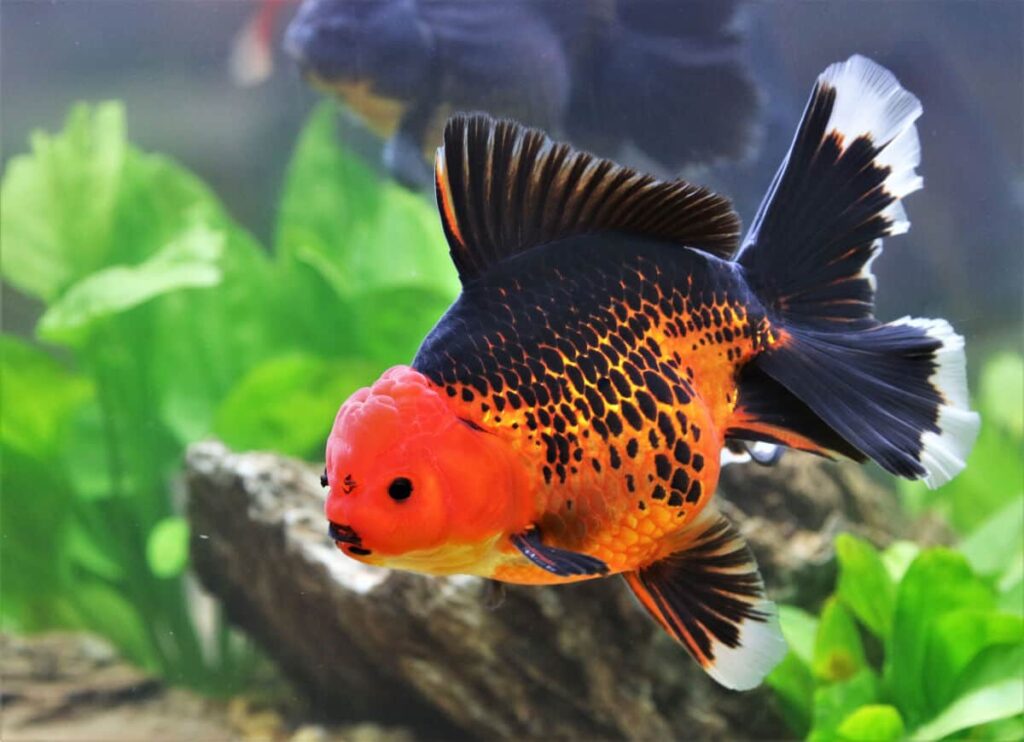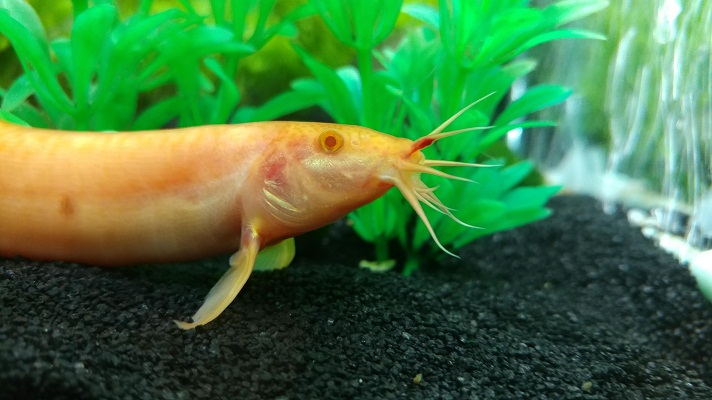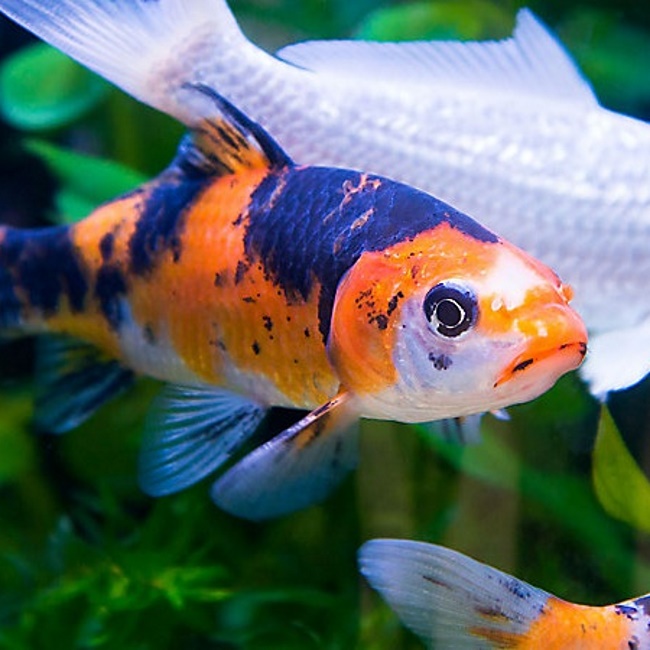

It is often an exciting feeling when you get a new fish for your aquarium. However, you need to know that your fresh fish requires acclimatization for longevity and survival. While many pet owners often complain about being sold fish in poor health conditions, this is not always the case, as it takes some time to acclimate a new fish to a home aquarium. These are delicate creatures that often need time to adapt to a new environment which makes a careful acclimatization process very important for the survival of your new fish. Knowing this important fact will help you take better care of fish when you purchase them from the pet store. In this article, we will take a closer look at how long to acclimate fish to their new home without any issues.
When you purchase a new fish, the last thing you want is that they die or struggle to adapt to their new home. This is why it is very vital to acclimate your fish to their new home to avoid encountering any problems.
The acclimatization process requires a cautious and meticulous approach to ensure your fish survives in its new home.
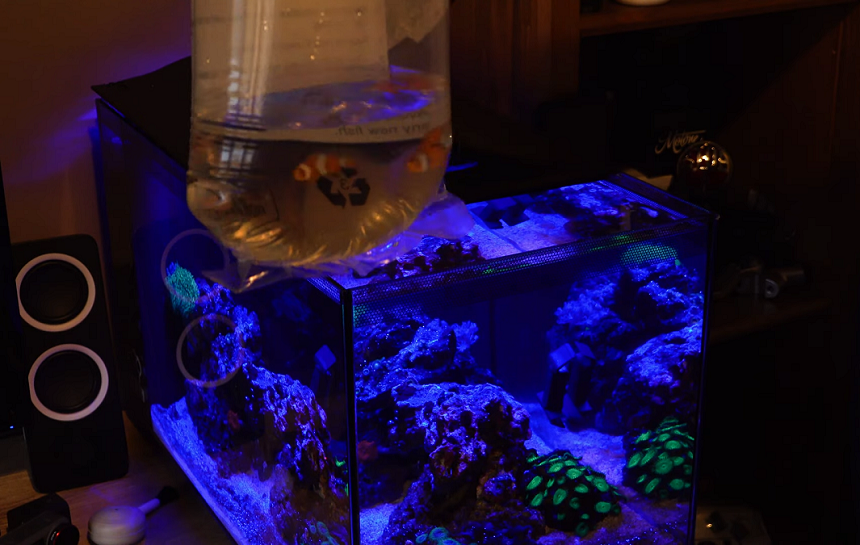
Once you purchase Trusted Source Aquariums deliver significant health benefits People who spend time in aquariums could improve their physical and mental wellbeing, a study has suggested. www.bbc.com your desired fish from the pet store, you should get it home immediately and transfer it from the bag. Fishes are delicate and sensitive creatures and hate being in plastic. The plastic bag from the pet store also lacks enough oxygen for any fish to live for extended periods. Sometimes, the water from the store may contain harmful elements like diseases or bacteria that can kill your fish. Therefore, you want to ensure you do not transfer any toxic biological agent into your fish’s new home by retaining the same water used to preserve the fish from the pet store.
Generally, the water in the plastic bag is not ideal for their survival for long periods. So as soon as you get home, reduce the lights to avoid any shock to the fish. Remember, a fish is quite sensitive to sudden changes, so any change in lighting could affect it or cause trauma.
It would be best to try to make your fish feel comfortable and warm as you welcome it into its new abode. As soon as your fish warms up to the new setting, you can adjust the lighting to your taste.
Before floating the fish into the aquarium, you must rinse the exterior of the plastic bag that contains your fish with clean water. This step is to avoid contaminating your tank with particles or germs. Let’s not forget that the tank will be your fish’s new home, so you want to ensure that the water is healthy enough to live in. These initial steps ensure your fish feels ‘settled’ into its new home without complications.
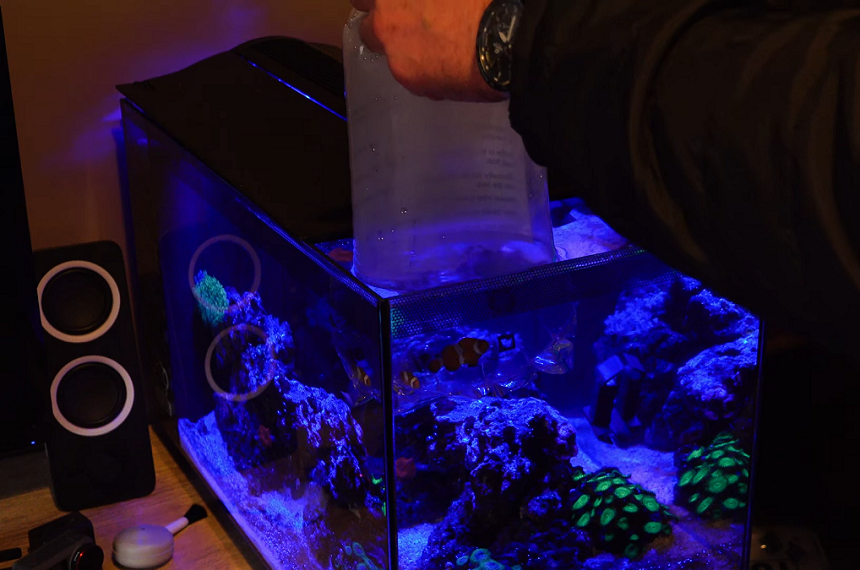
By floating the bag over the water, the temperature in the bag balances with the temperature in your aquarium. This helps prevent any shock to your fish. You need to open the bag and roll the top into a ring to provide some oxygen for the fish for this step. You can drain some as long as it doesn’t exceed the dorsal fin if you have excess water. You should float the bag over the water very slowly for about 15 to 20 minutes. Leave the bag slightly open at the top so your fish can get some oxygen while the bag floats over the water. After this period, the water in the bag should be more or less at the same temperature level as the water in your tank. This entire process is to make sure that the transition for your fish is stress-free and harmless.
After floating the bag over the water for some minutes, the following process is to mix some of the aquarium water into the bag still containing your fish. This step aims to condition the temperature in the bag to the tank and help the fish adjust to the water chemistry of their new habitat.
You need to open the bag and slowly pour some water out of the aquarium into the bag at intervals. You can do this every 5 to 10 minutes for about an hour, depending on the size of the fish. This process might take longer for a bigger fish.
Do not rush this step, as the aquarium water needs to blend Trusted Source Frontiers | Cold Acclimation for Enhancing the Cold Tolerance of Zebrafish Cells | Physiology Cold stress as an important threat facing the aquaculture industry is a common phenomenon in the life history of fish. The current research on the tolerance mechanism of fish cold stress is not perfectly developed. By using ZF4 cells as the research material, the process of short-term low temperature stress and long-term low temperature acclimation was applied to the cell, to explore the relevant molecular mechanisms of fish cold stress tolerance. www.frontiersin.org well with one in the bag. Instead, continue adding the aquarium water to the bag at 5 to 10 minutes intervals until you are sure the water temperature in the pack is at the same level as the one in the tank.
Once you’re satisfied with the water temperature in the bag, it’s time to introduce the little guy into his new home. You will need a pair of scissors, a bucket, and a fishnet for this step. Now place the net over your bucket, just right on top of it. Pick up your scissors and gently cut through the bag over the tank to let the fish out into the net. This will drain the water into the bucket over it while you have the fish lying inside the net trap.
You can now dip the net with the fish into the aquarium and slowly turn it over to let the fish swim around. You must be gentle with this process and try not to panic as you might end up catching your fish in the net. Also, your fish should not be out of the water for too long, so you have to move the fish quickly.
An alternative to releasing the fish is to simply scoop the fish out of the bag without necessarily cutting the bag. You have to scoop the fish with a net directly from the bag, but be careful not to add any of the water from the plastic bag into the aquarium. Then, gently turn the fish in the tank, and in a matter of seconds, you will have your fish swimming away. You can then proceed to pour the water in the bag into a wash-hand basin or sink as you no longer need this water.
Acclimating fish to an aquarium is very vital for the health of the fish and its new home. While the temperature of the water and lighting are critical aspects, other crucial elements play a role in the survival of your fish. Here are some factors that make this acclimatization process essential.
The water composition of your aquarium plays a vital role in the short-term and long-term health of your fish. So before dipping your fish into the tank, you need to ensure that the water chemistry and conditions are ideally suited for the new fish. All types of fish require a certain level of water chemistry and temperature to preserve their health and longevity. You also need to know if fish types like the Koi fish can live in tank water. If the water conditions are not perfect for the fish, they may experience pH shock, likely killing the fish. You should consider getting the best heater for your aquarium to create a temperature perfect for your fish. This is why it is essential to mix the aquarium water with the bag to get the fish familiar with the water condition of its new home.
Acclimating your fish to the aquarium also helps familiarize your fish with other inhabitants of your tank. Fish are generally hostile towards each other. If you have another fish in your tank, you should consider adding the fish when pouring the aquarium water into the bag. The acclimatization process is a great way to help your new fish get familiar with his new ‘housemates.’ Having the best rimless aquarium may not only be a solid option to view your new fishy friends but will also give your aquarium an elegant look. The BrandLifegard Aquatics and Landen 60P provide elegant rimless fish tank options for your interior designs based on popular reviews.
Light and temperature are not all fish are sensitive to. Loud noise, sounds from waterfalls, and filters can shock or cause stress to your fish. However, the plastic bag does a great job of containing these sounds. Once you introduce the fish into your aquarium, they will slowly familiarize themselves with their new environment.
Having read this article, you should now know how long to acclimate fish and the importance of going through the acclimatization process. This process is relatively straightforward and does not take hours or days. However, you must carry out this process carefully to prevent any mishap or complication. You need your fish to adjust to the new environment perfectly, and by following our guide, you will be able to do this without stressing your fish out. On the last note, remember to never drop your fish directly into the aquarium as you could hurt it, or worse, it could die.

